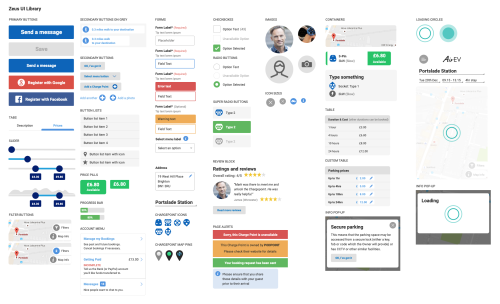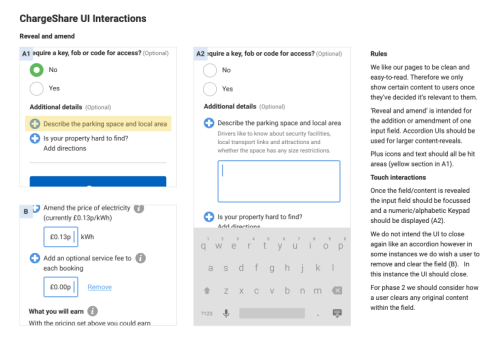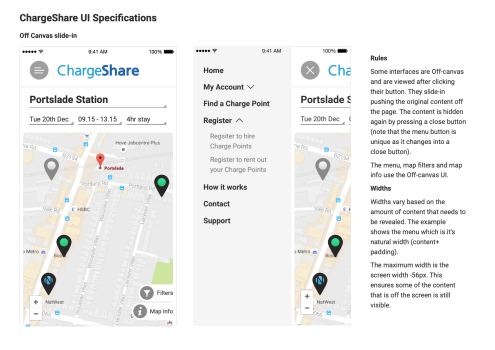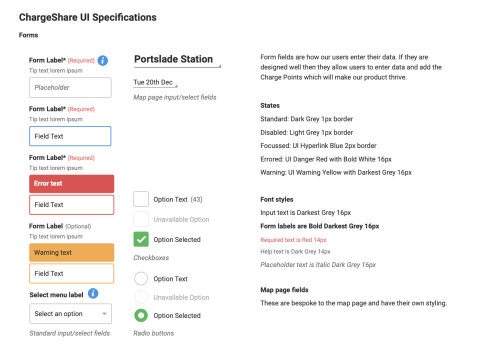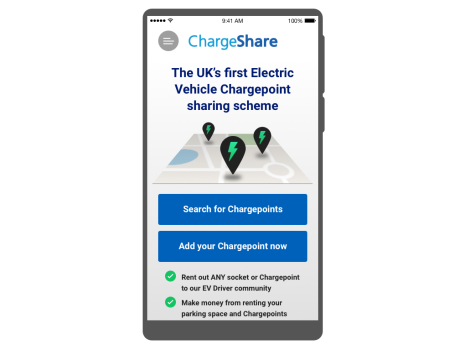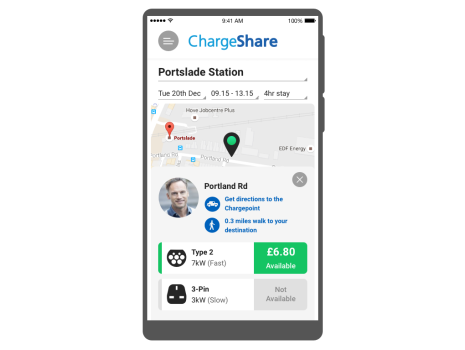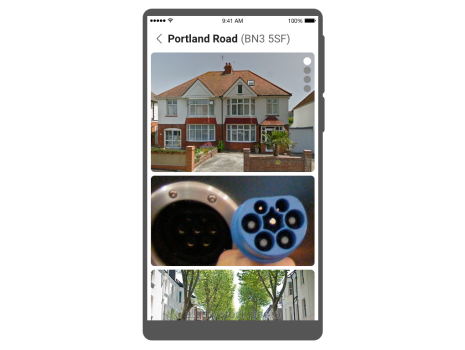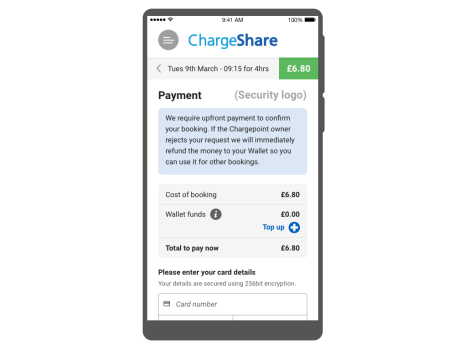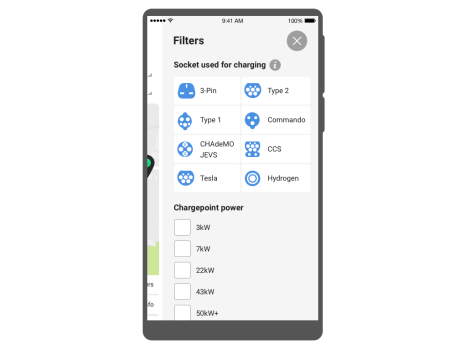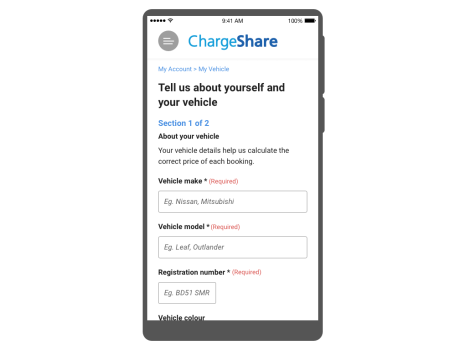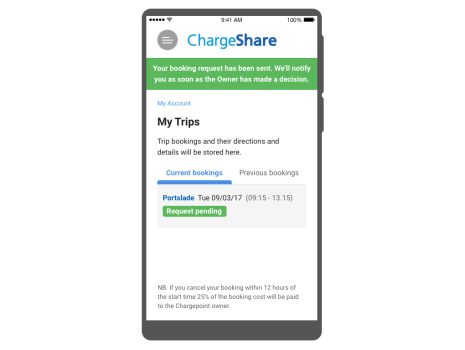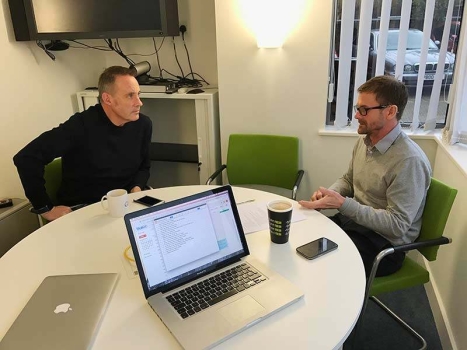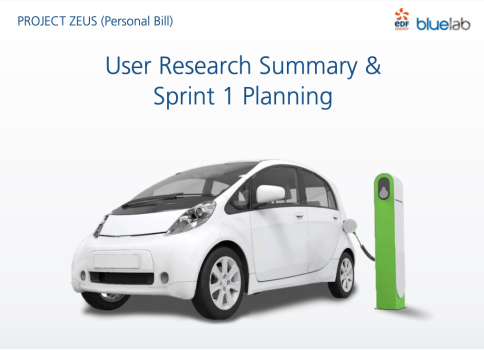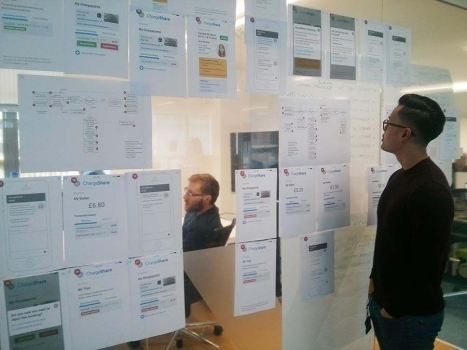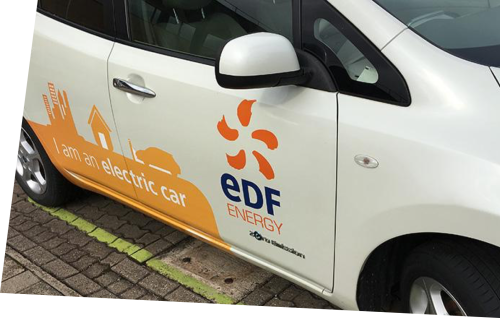

EDF Innovation Lab
Innovating for electric vehicle charging whilst exploring Blockchain technology
Researcher & Product designer
Contract (2016-2017)
Background
EDF innovation lab is a product team that work on future-thinking projects that explore service and technical possibilities that the larger business can incubate and absorb. They work faster and more creatively than the traditional business so that competitive ideas can rise to the surface.
Opportunity
In 2016 the electric vehicle (EV) market was starting to gain traction, however a barrier to uptake was the lack of charging points. Due to this, fully electric vehicles were not as popular as petrol/electric hybrids. Fully electric vehicles were seen as a business opportunity for EDF as they rely solely on electricity and they have the potential to support emissions targets as part of climate change goals so should therefore gain market traction.
Who I worked with
- Product directors and owners
- Lead design
- Full stack developers
- Scrum masters and project managers
- EDF senior stakeholders
Solution
We conceived and created a mobile webapp that allowed chargepoint owners to share their chargepoints with EV drivers (think Airbnb for your home’s chargepoint). It allowed chargepoint owners to specify a fee and manage bookings from EV owners (who were allowed to search, book and pay for the chargepoint). Being a mobile webapp we took advantage of GPS and map capabilities to help guide users to their bookings.
Outcome
One of the project’s business goals was to build the technology that recorded and managed transactions by using Blockchain. This aided EDF to explore if Blockchain could benefit and be absorbed into the wider business. A hope was that they could move away from their expensive and dated legacy solution to something more flexible and modern however they needed to explore if it supported all of the requirements. We worked with Tata Consulting experts who delivered the Blockchain setup for our developers to integrate into our webapp. (NB. As this engagement was a contract role I wasn’t privy to the outcome of this)
Key activities
Generative user research
After domain research I planned our research study and recruited a panel of EV drivers. We interviewed them in their homes and around their EVs and chargepoints to fully explore their issues with charging. I presented findings and recommendations to the director and lead designer from which we agreed our scope.
UX and product design
Working collaboratively with our fullstack developers and lead designer I mapped out the architecture of the user accounts and payment system to uncover how technology influenced the user interface. Once these constraints were accounted for I produced user flows and wireframes of the entire app so that the team could review. These were later turned into a low-fi prototype which we used to brief in content requirements and user test.
Mobile UI design
From the wireframes I produced hi-fidelity versions of key screens to explore the visual language of the product. These were expanded into a component library with accompanying guidelines for design usage and mobile interactions for developers. I reviewed development of the front end, working on CSS to style elements.
Rapid R&D to support Agile sprints
To quickly gather regular user feedback, I recruited a research panel whom I could schedule ongoing test sessions. I worked a sprint ahead of the development team; agreeing on a scope which I spent the first week designing. In the 2nd week I prepared the prototype for user testing and then iterated this for handover for the development sprint. As this was a mobile product I needed to set up mobile testing on both Android and iOS environments.
Lessons learned
- Interviewing users in their environments (contextual enquiry) can provide you with more insights. For a product with a physical user journey (driving and connecting) this was incredibly helpful.
- When working on UI prototypes for mobile, ensure to account for Android and iOS interactions… your prototypes will flunk if you give a user an environment that they’re not used to.
